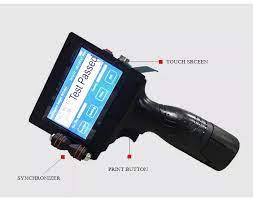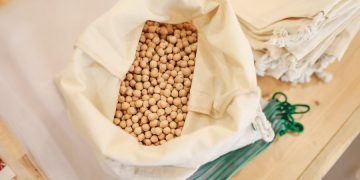Has the term Sublimation printer ever been use in a sentence before. That couldn’t be further from the truth. Large-scale printing may appear to be a complicated process.
Sublimation printer is so common these days that it’s likely that the cup you’re holding was print with it. It’s possible that the same technology was use to print your favorite t-shirt.
Sublimation, as the name implies, is a straightforward process. It is a simple process to learn. It is also famous due to the fact that it produces prints of excellent quality. The following is a basic overview of sublimation printing.

So, what is sublimation print and how does it work?
Before we go any further, let us define the term “sublimation.” Sublimation is a chemical reaction in which a solid is transform into a gas without the use of a liquid catalyst. Rather than turning into water when frozen ice cubes are expose to the air, they condense and form fog.
Sublimation printer operates in a similar manner. When images are transferrer from sublimation paper to a printing medium, heat is use to change the image from solid to air and back again as it cools, creating a transfer effect. In the printed material, the print work is permanently incorporated into it.
What Is the Process of Sublimation?
Sublimation printing begins with the design process, just like any other printing technology. Designing a professional-looking logo is vital since the image selected on the computer will be print in its entirety.
After that, the design is print on heat transfer paper. When heated, this paper is utilize for image transfer purposes. Colors used in sublimation paper are CMYK. Therefore, the printer must be capable of dealing with this. Fortunately, most modern printers are capable of switching between the two modes.
The artwork is then transferred to the final material using heat. The material used for sublimation printing must be capable of supporting the process. Polyester and polyester-coated fabrics are frequently used because they produce prints that are not washable. Cotton can also be use, although the print will be temporary due to the nature of cotton.
Heat transfer necessitates the presence of a heat source. Different heat sources are employee for the various materials. Thermal transfer, flat bend, and sublimation machines are examples of this type of equipment. To ensure long-term durability, a high-quality image must first be generate with a specified amount of heat and then cooled.
Which Printing Method Is the Most Effective?
The use of sublimation printing has a number of advantages over traditional printing procedures.
First and foremost, it assures the long-term durability of polyester and polyester-coated fabrics. When exposed to the elements and regular washing, the quality of most printing options degrades. Because sublimation makes the print a permanent part of the cloth, only surface wear and tear has an effect on the quality.
Sublimation protects the image quality in the same way as design does. The issue of colour shade variances, which can occur with screen printing, is not present here.
Also, the quantity of colours in an image has little effect on sublimation prices. The pricing for single and multiple colours has not changed since last year. As a result, the cost of producing coloured graphics has decreased significantly.
Sublimation printing is also ideal for printing tiny volumes in a short period of time. When printing only one or two items, the printing process might save you money on printing costs. Printing on personal items such as clothing and ceramics has become increasingly popular. Printing for both professional and personal use is possible with this device.
The sublimation process is simple to understand and put into practise. You may start providing sublimation printing services as soon as you have the proper tools and a few tutorials. Sublimation printing, like screen printing, is less time-consuming to manufacture when compared to screen printing. Sublimation printing, on the other hand, has several disadvantages.
Every printing method has its own set of disadvantages:
-
It only accepts polyester and polyester-coated material, which restricts the range of media that can be use.
-
There is also a limit to the colour of the material. The picture quality of sublimation printing is degrade when printed on dark materials. It is necessary to complete two steps: sublimation printing and heat transfer. Compared to direct printing, this method takes longer.
-
Finally, because a printer and a heat transfer machine are require, the initial beginning expenses are substantial.
Surprisingly, despite the disadvantages, industrial date code printer is a good printing technique. There are no complaints about the quality or longevity of it. It allows you to save money while yet keeping quality. When it comes to creating one-of-a-kind patterns, sublimation printing is the best option.


























































